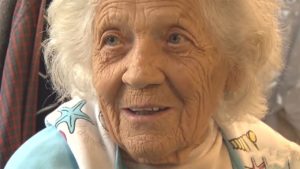Old. Dead.

About a fifth of U.S. virus deaths are linked to long-term care facilities for the elderly.
Nursing homes are, in the words of one health official, “death pits.” (You may recall, in a previous post, I quoted another health official calling prisons in the time of covid, “petri dishes.”)
The news from nursing homes, assisted living and memory care facilities, and other places where the sick and the elderly are housed is grim. As the New York Times reports: 72 long-term care facilities in New York have had five or more deaths; infections have broken out in 394 long-term care facilities in New Jersey; 24 people at a facility in Maryland have died; more than 100 residents and workers have been infected at another in Kansas; and people have died in centers for elderly military veterans in Florida, Nevada, New York, Maine, Massachusetts, Oregon and Washington.
There’s a lot to untangle about this.
One obvious thing: This virus, like pretty much any disease, takes hold among vulnerable, medically compromised people. Healthy older people (of which there are millions) don’t live in assisted living. Frail and fragile older people do. Contagious diseases of all kinds make their way through these places quickly and devastatingly. So there’s that.
There’s also the way these places are designed. I’m not talking about the estate-like, private-apartment, gated-community housing for the wealthy (healthy) elderly. I’m talking about small, confined settings like nursing homes and memory care facilities where people live sometimes two to a room, where they sit together in small common areas all day, eat together clustered at tables. There is no social distancing. These places are not constructed in a way that makes that possible.
But there’s something else at work here, not so far beneath the surface.
First: THIS IS HOW WE TREAT OLDER PEOPLE in our culture. We warehouse them. We create confined, segregated spaces for them. And we don’t pay attention unless something terrible happens in those confined spaces.
And, we do this, we warehouse our elderly, because of our attitudes toward aging and the aged: They are useless. They are a drain. They are in the way.
And the warehouses we create are breeding grounds for disease not just because of how they are constructed but also because of how we treat the people who work at these facilities.
I know. I worked at an Alzheimer’s care facility for four months. My minimum-wage job did not include insurance (no surprise there). But it also did not include any provision for sick days. It was not just that there were no paid sick days. It was that sick days were NOT ALLOWED. If you were ill, you had the responsibility of finding a replacement. If you didn’t find someone to cover your shift, you risked being fired. If this happened twice, you were fired.
But mostly, if you were sick, you came in to work. You could not afford to stay home. Many women I worked with chose employment at this particular facility because it was on a bus line. They could not afford a working automobile. Or gas if they had one. Many were on food assistance even though they worked fulltime. That’s how we value the people who care for our sick elderly. Because that’s how we value our elderly.
This pandemic with its death toll challenges us, compels us to examine our attitudes toward the elderly, how we treat them and how we treat those who care for this. Let some good come of this.
*image is not of a person who died. I chose this because I wanted us to LOOK at the face of the elderly.






0 comments
Kick things off by filling out the form below.
Leave a Comment